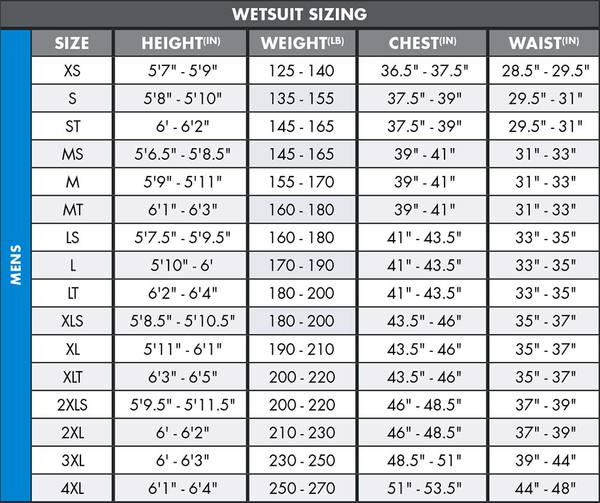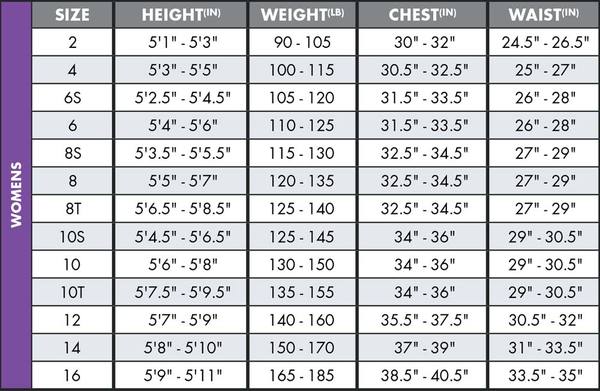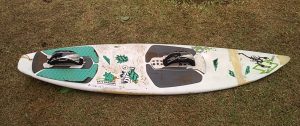Unless you live in the Caribbean or kitesurf only in the warm season, a lot your kitesurfing sessions will likely take place on colder days and/or in colder water. Having the right wetsuit for the right conditions is critical to your ability to stay longer in the water. It’s also an essential safety piece of equipment in case you get in trouble.
A good kitesurfing wetsuit should not only have the right thickness for the current water temperature, but it should also protect you from the cold and wind when riding on your board or standing on the beach. It should be snug but not too tight, stretchy but not at the cost of strength. Overknee wetsuits also give you great freedom of movement and avoid water being retained around your ankles and calves when riding.
What to look for in a kitesurfing wetsuit
The main factors to consider when choosing a kitesurfing wetsuit are :
- Wetsuit type (shape): full suit, overknee (leg length stops right under your knees, not covering your calves and feet), short legs / short sleeves, neoprene vest. I use different types for different seasons.
- Wetsuit thickness: wetsuits generally show 2 thickness numbers, e.g. 4/3: this means the wetsuit has a 4mm neoprene on the torso and a 3mm thickness on the arms and legs. Thicker neoprene is less flexible, and we normally need the most flexibility in our arms and legs and the most heat retention in our core.
- Neoprene type and lining: whether the wetsuit has a smooth skin type neoprene on the torso area is essential. Smoothskin adds some weight to the suit but highly very wind resistant – I try to avoid it for my surfing wetsuits (vs. kitesurfing). I also favor wetsuits with a warm interior lining – it can make a big difference in keeping you warm.
- Neoprene flex: most wetsuits use a stretchier and lighter type of neoprene in the arms and sometimes in the legs than on the torso. While this gives you more comfort in movement, flexier neoprene is typically much less durable than regular or smooth skin neoprene, and significantly shortens the life of your suit. While I feel the need for such stretch (“elasto”) neoprene for my surfing wetsuits, I tend to stay away from it when I can for kitesurfing – you won’t need that much flexibility for kiting except perhaps for extreme freestyle tricks.
- Another important aspect which affects your wetsuit’s comfort and ability to keep you warm during long sessions is how seams are sealed. Simple flat-stitched seams save you from rashes but are not really watertight. Glued and blindstitched seams are watertight, and even more so if they are sealed and taped. Taped seams are supposed to be more durable, though in my experience the tape often starts to come off after a short while.
- Note on zipper style: some wetsuits have a traditional back zipper while others boast a front zipper on the chest – you put on the top part of the suit like a hood before zipping it up. This is merely a matter of personal preference, I personally find wetsuits with a zipper in the back much easier to put on and take off.
My recommended kitesurfing wetsuit for cold days
Disclaimer: I don’t typically kitesurf in very cold conditions (e.g. ice and snow). I rarely get out when air temperature drops below 50ºF (10ºC) – and water temp is less than 55ºF (13ºC). Keep in mind though that strong wind typically makes it feel much colder.
When temperatures drop below 60ºF (63ºC), my O’Neill Psycho 4/3 works wonders year-round. I NEVER get cold, no matter how long I ride, and most importantly, no matter how much time I stand on the beach in my wetsuit in between sessions.
That’s something most newbies often don’t think about: what distinguishes a good kitesurfing wetsuit from a mediocre one is not its weight or amount of neoprene stretch, it’s how long you can stay on the beach in strong cold wind while still being wet from previous riding!
In that respect, my O’Neill Psycho gets a 10. At well over $300, it’s a quite pricey wetsuit – see its price here on Amazon.
To me though, it’s worth every penny! The smooth skin neoprene on the torso and back really cuts the wind – the “Envy” foam which the core is made of in newer versions apparently has similar wind-breaking properties.
The orange interior lining truly maintains my body heat inside, even after an hour talking to buddies on the beach after getting out of the water. My worst moment in every session is taking off the wetsuit.
The wetsuit’s taped and sealed flat-stitched seams let little water in – that water quickly heats up with my body temperature and keeps me nice and warm throughout the session. My body tends to heat up fast so I sometimes let a little water in through the collar to cool myself down.
The Psycho has nice flex in the arms and legs, making it very comfortable when riding. Unlike other wetsuits, the flex doesn’t seem to affect the fabric’s durability in these areas.
If the Psycho has a weakness, it’s the seam tape which tends to come off a bit in some places after a while. In my experience, this happens with a lot of wetsuits though. Don’t leave your wetsuit to dry for hours in the hot sun as the UV will damage the seams. I just glue the tape back on using neoprene glue, works OK for me.
Also, make sure you get the right size for you, if you get too small a size the wetsuit will probably rip at the seams or below the zipper. If you’re a taller person, go for an MT or LT instead of a regular M or L. Here are ONeill size charts (source: O’Neill website) :


Note that getting a wetsuit too big for you can improve durability but may not be as snug and comfortable as you’ll have more water and air coming in, resulting in the suit not keeping you warm enough.
My recommended kitesurfing wetsuit for warmer days
When the air temperature is above 65-68º (18-20ºC) I use a thinner, simpler 3/2 wetsuit that keeps me comfortable and warm-ish amidst chilly water and high winds. At under $150, I find the ONeill Reactor good value for the money – check out its exact price on Amazon.
The ONeill Reactor is a surfing wetsuit, relatively basic but with good quality fabric and zipper, smooth skin panels on the front and back (wind resistant), and flexible neoprene on the arms and legs.
The flat-stitched seams do let in a bit of water, but unlike surfing – where you spend a lot of time diving underwater, it’s not that big a deal for kitesurfing where you stand outside of the water most of the time. This wetsuit works really well for me in warmer conditions.
Advantages of overknee wetsuits for kitesurfing
One thing that often annoys me when wearing a full suit is the water going up my ankles, calves, and legs when I ride. The water often gets trapped in there and you end up having small balloons around your ankles – you regularly have to pull out the leg sleeves to let the water out.
A solution to this problem is to use an overknee suit – one that stops below your knees, leaving your calves and ankles bare. For some reason though, overknee wetsuits are getting harder to find even though they are super convenient. My guess is manufacturers may be reluctant to make them because they’re not as useful for other sports as full suits.
Ion makes a great overknee 4/3 suit, the Strike. I don’t personally own it but one of my closest friends does and he’s very happy with it. At first I thought he would get cold faster than me because of the short legs, but having your calves uncovered actually doesn’t make a big difference as long as the wetsuit is warm – though it might be different in polar conditions.
I do own an overknee 2/2 spring suit with short arms for the summer which I really like. It’s getting quite old but I have a hard time finding a replacement (including a thicker one).
Conclusion
Whichever wetsuit(s) you choose for kitesurfing, be sure to :
- Get the right size for you (this is essential)
- Choose the right thickness for the temperature (3/2, 4/3, 5/3)
- Make sure you have a smoothskin panel front and back for the wind
- Look for watertight, glued/sealed seams for colder weather
- Look for interior “heating” type of lining
- Focus on durability rather than neoprene stretch
- Look for ONeill or similar brand – really warm suits
- If you can, try an overknee suit


